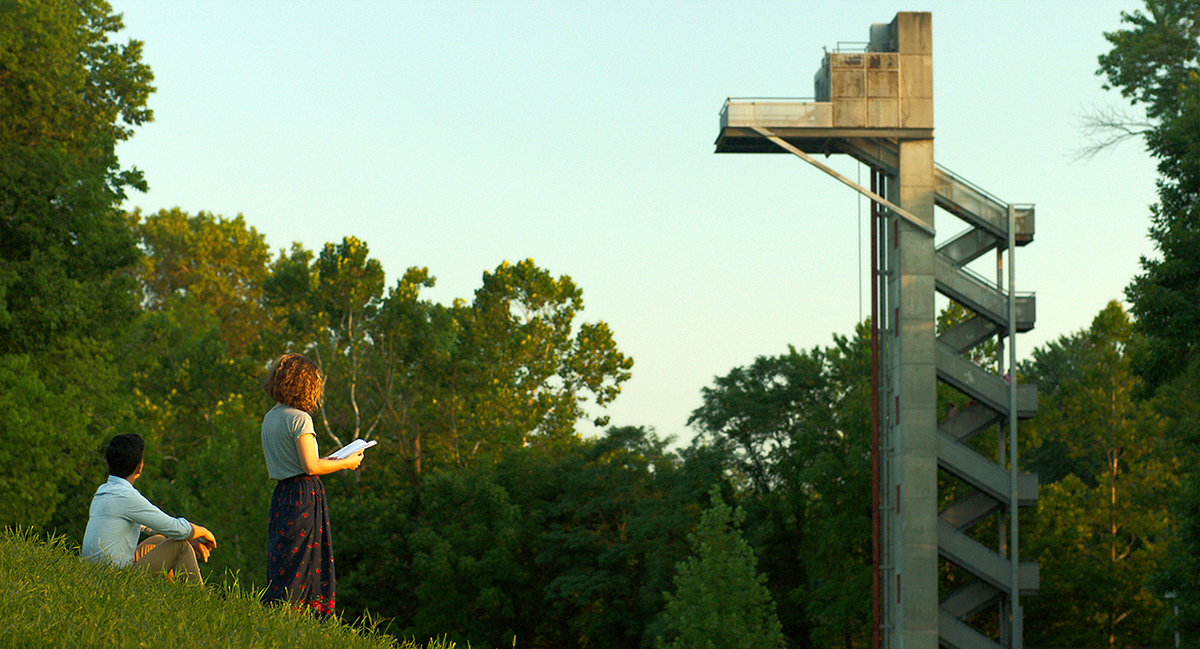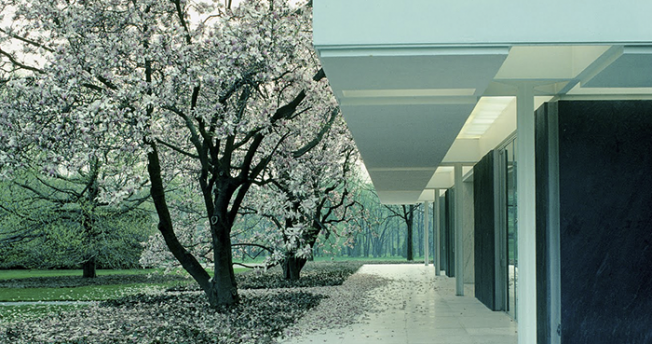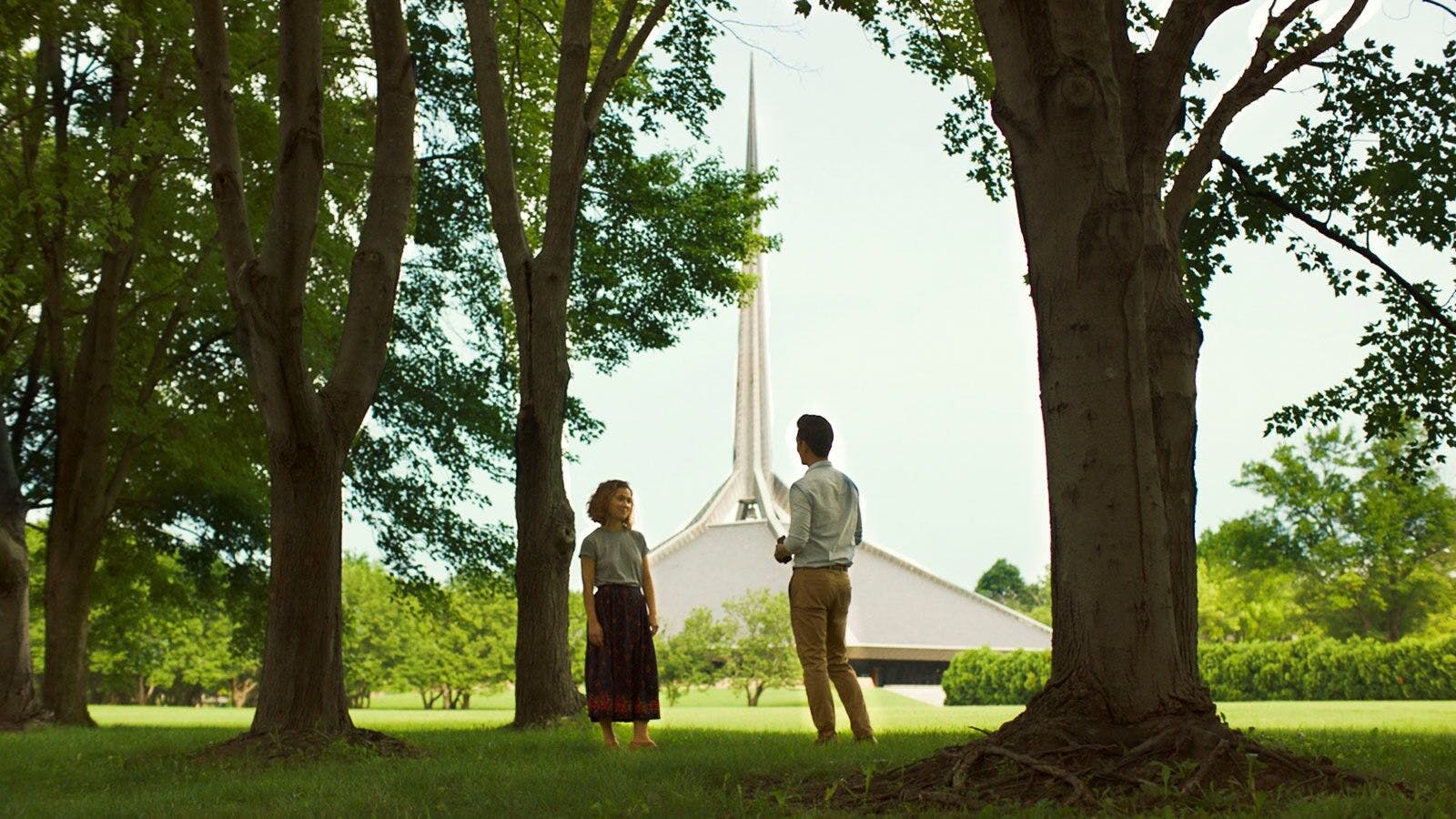nickthetasmaniac
Mentor
Of today's Hollywood directors Wes Anderson comes to mind.
skibeerr
Well-known
+1 on Wim Wenders.
Jim Jarmusch definitely.
Jim Jarmusch definitely.
maddoc
... likes film again.
Ozu`s Tokyo mono gatari (Tokyo stories) has become one of my favorite films. In this film it is interesting how the camera takes almost all scenes from a low position.
Funny you should say this but Wim Wenders went to Japan back in (I think) 1985 to make a documentary about Yasujirō Ozu - who I featured in my opening post. It was called "Tokyo Ga". I came across it when it was included as a bonus feature in the DVD I bought of "Tokyo Story.
It is a pretty safe bet that Wenders is a big time fan of Ozu. And no doubt sought to emulate him in some ways. (Though I am not myself particularly familiar with Wender's work......yet......I suppose its a new line of obsession for me......:^)
Incidentally I wonder how much Ozu was influenced by Zen. It certainly seems to reflect in his work. Also his gravestone in or near Tokyo does not even have his name on it. Just the character "Mu" - nothingness.

telenous
Well-known
Ozu`s Tokyo mono gatari (Tokyo stories) has become one of my favorite films. In this film it is interesting how the camera takes almost all scenes from a low position.
The low angle shot (as if seated on a tatami) and the consistent use of the 50mm lens are distinctive in Ozu's oeuvre. For what it's worth, I love Tokyo Story too.
Directors who cut their teeth in the silent era had a keen sense of visual exposition because that was the only means available at the time. Dialogue intertitles interrupted the flow of the movie and were perceived as cumbersome and inelegant. This general perception persisted with that generation even after dialogue became an integral part of the script. For example, directors like Ozu, Hitchcock, and Ford retained the "silent era" directing touch, manifested with a framing style that often resembles photography. I think they also gave a valuable lesson to later generations of directors, i.e. that the art of photography is a crucial element in the mix that makes a movie.
.
peterm1
Mentor
The low angle shot (as if seated on a tatami) and the consistent use of the 50mm lens are distinctive in Ozu's oeuvre. For what it's worth, I love Tokyo Story too.
Directors who cut their teeth in the silent era had a keen sense of visual exposition because that was the only means available at the time. Dialogue intertitles interrupted the flow of the movie and were perceived as cumbersome and inelegant. This general perception persisted with that generation even after dialogue became an integral part of the script. For example, directors like Ozu, Hitchcock, and Ford retained the "silent era" directing touch, manifested with a framing style that often resembles photography. I think they also gave a valuable lesson to later generations of directors, i.e. that the art of photography is a crucial element in the mix that makes a movie.
.
I too have the distinct impression that Ozu's use of static cameras was a device that carried over from his silent film days - old silent film cameras were big, cumbersome and tended to be used exactly as Ozu did even after it was strictly no longer necessary for him to do so from a technical stand point.
I also have the impression he was intensely conservative - when talkies came along he did not want to change from making silent films. This tends to back up the idea that he simply carried his style of film making over and kept doing what he was good at. When people asked him why he kept making the same kinds of movies and, what's more in the same way, he compared himself to a tofu maker. A tofu maker does not innovate. Once he has a formula that works for him, he keeps doing the same thing over and over and over.
The low angle shot he used seemed to be designed to put the camera at eye level of characters seated on tatami. Ozu often (almost always in fact) broke the 180 degree rule as film makers call it by pointing the camera directly at a character interacting with another character as if they were talking directly to the audience. This would not have worked if his camera were not at eye level. It also has the effect, intended or otherwise, of somehow making the film more authentically Japanese - or at least giving it a very Japanese feel due to the seating position and the low camera level. It has been said that Ozu told stories intended for Japanese, while Kurosawa, for example, made films for the world. That comes across from their techniques.
The thing that gets me are his "hallway scenes", something he used in almost every movie if not actually in every movie. Some of these absolutely remind me of Hitchcock - there is a directly analogous scene in Rear Window if I recall correctly.
https://vimeo.com/55956937
Roger Hicks
Mentor
Astonishing that no-one has mentioned Eisenstein yet.
Cheers,
R.
Cheers,
R.
DominikDUK
Well-known
Pretty much any director worth his salt composes the frame some very obvious and some less furthermore some genres lend themselves to still photographic composition while others e.g. dialogue heavy comedies less so. Some of the framing especially in Hollywood is the result of the director of photographies work. Spielberg is very good at framing, Sergio Leone etc... Wong kar Wai and the list goes on and on. There's a cinematography book by Andrew Lazlo, ASC titled every Frame a Rembrandt well worth the read imo. Regarding framing pretty much the modern master is Roman Polanski Rosemary`s baby is a fantastic example of superb framing, the Ninth Gate is another good example. Also don't forget Bernardo Bertolluci superb Framing and in most of his films you could take pretty much any frame from his movies and hang it on your wall.
HHPhoto
Well-known
Wim Wenders comes to my mind.
Yes.
He is also an excellent photographer. And he loves using silver-halide film both for his movies and his photography.
Cheers, Jan
DominikDUK
Well-known
Yes.
He is also an excellent photographer. And he loves using silver-halide film both for his movies and his photography.
Cheers, Jan
Have to disagree with you these days, as stated in many of his interviews, he prefers digital for his movies and analogue film for his stills. Still a great director and his long time collaborator Robby Müller died a few weeks ago. He did choose great dps who shared his vision. I think it's funny that we always talk about the directors but completely miss the dp who is often just as important to the framing as the director. Orson Welles knew this and credited his DPs accordingly
HHPhoto
Well-known
Have to disagree with you these days, as stated in many of his interviews, he prefers digital for his movies and analogue film for his stills.
That is new to me. Do you have link to a current interview?
Thanks.
Cheers, Jan
DominikDUK
Well-known
That is new to me. Do you have link to a current interview?
Thanks.
Cheers, Jan
An interview from 2015 in the Telegraphy https://www.telegraph.co.uk/photography/what-to-see/wim-wenders-photography-interview/ "“I embrace digital technology in my films, but I’m a conservative photographer.."
The Filmmaker's View: Wim Wenders – Analog vs. digital
https://www.youtube.com/watch?v=yLWk6w8mQhQ
Also pretty much all of his movies of the last few year were shot with digital cine cameras. Wim Wenders is funny in that regard he is an extreme proponent of analogue photography and only does analogue photography but on the other hand he embraces the "Freedom" he's gotten with digital cinematography. His 3D dancing film (Pina 2011) wouldn't have been posssible without digital cine cameras.
karateisland
Established
I'll throw Kogonada into the ring--Columbus was filled with images I would kill to have taken.
https://en.wikipedia.org/wiki/Columbus_(2017_film)



https://en.wikipedia.org/wiki/Columbus_(2017_film)



Matt04182
Member
Lynne Ramsay was a photographer before becoming a filmmaker. Heavily inspired by Nan Goldin.
Kubrick had been shooting for Life since he was a teenager and was friends with a lot of New York photographers of that period, like Arbus, whom he later quoted in The Shining. Despite his famous mirror selfie, I don't think he shot that frequently with Leicas. He shot medium format and, later, the Nikon F3.
William Klein, Spike Jonze...
Mark Romanek references photography all the time. '99 Problems' (http://www.anonymouscontent.com/work/music-videos/anonymous/mark-romanek/jay-z-99-problems/) is like street photography in motion.
I think Ozu was a painter, not a photographer, in his spare time. I don't really see still photography as an influence. He was also a graphic designer. Look up the books he designed to write his scripts in, they're great. Antonioni, previously mentioned, was an architect, like Ridley Scott and Hitchcock -- as good a place to start as photography, apparently.
Wes Anderson sort of has a connection to Avedon. Owen Wilson's mother is Laura Wilson, Richard Avedon's longtime assistant. You'll notice in The Royal Tenenbaums references to In the American West. I don't know if thinks like a photographer...
Kubrick had been shooting for Life since he was a teenager and was friends with a lot of New York photographers of that period, like Arbus, whom he later quoted in The Shining. Despite his famous mirror selfie, I don't think he shot that frequently with Leicas. He shot medium format and, later, the Nikon F3.
William Klein, Spike Jonze...
Mark Romanek references photography all the time. '99 Problems' (http://www.anonymouscontent.com/work/music-videos/anonymous/mark-romanek/jay-z-99-problems/) is like street photography in motion.
I think Ozu was a painter, not a photographer, in his spare time. I don't really see still photography as an influence. He was also a graphic designer. Look up the books he designed to write his scripts in, they're great. Antonioni, previously mentioned, was an architect, like Ridley Scott and Hitchcock -- as good a place to start as photography, apparently.
Wes Anderson sort of has a connection to Avedon. Owen Wilson's mother is Laura Wilson, Richard Avedon's longtime assistant. You'll notice in The Royal Tenenbaums references to In the American West. I don't know if thinks like a photographer...
xayraa33
rangefinder user and fancier
Sergei Eisenstein would be my vote on directors that think like still photographers.
Matt04182
Member
Also, I disagree that the silent era was more static. Have you seen Ozu's earliest work? He occasionally uses a dolly. It's strange, feels awkward. It just seems wrong. They're genre films, too. I can't recommend them, but it's interesting to see how his style developed.
DominikDUK
Well-known
Grapes of Wrath (1939) looks like a series of FSA photographs. Michael Cimino's Heaven's Gate is another still photographic film.
DominikDUK
Well-known
Nearly forgot Days of Heaven or pretty much any Terence Malick movie.
sebastel
coarse art umbrascriptor
not a director, but chris doyle is quite a cameraman ...
for example:
days of being wild
in the mood for love
2046
for example:
days of being wild
in the mood for love
2046
santino
FSU gear head
In hateful8 definitly Tarantino. The movie is almost boring because of its lack of motion and dialogues. As far as i know they shot the movie on anslogue film with vintage anamorphic lenses.
And Anton Corbijn - but he is rather a photographer than Director.
And I second Pawlikowski - he has a new movie "cold war " in b&w but haven't Seen it yet.
And Anton Corbijn - but he is rather a photographer than Director.
And I second Pawlikowski - he has a new movie "cold war " in b&w but haven't Seen it yet.
Joao
Negativistic forever
Ingmar Bergman and Carl Theodor Dreyer fit in the list, IMO...
Joao
Joao
Share:
-
This site uses cookies to help personalise content, tailor your experience and to keep you logged in if you register.
By continuing to use this site, you are consenting to our use of cookies.

